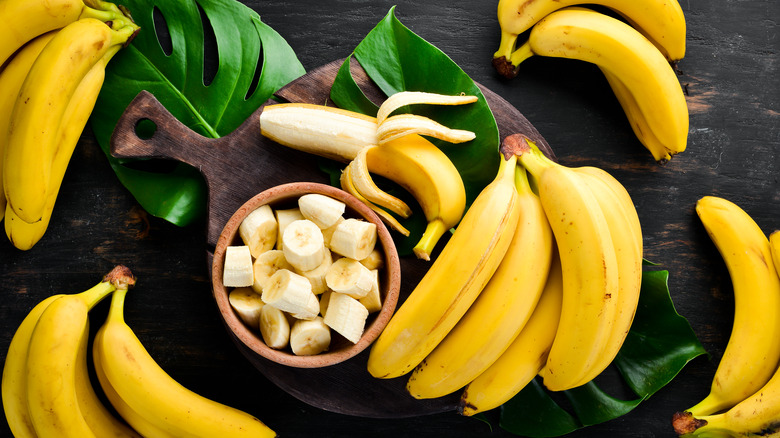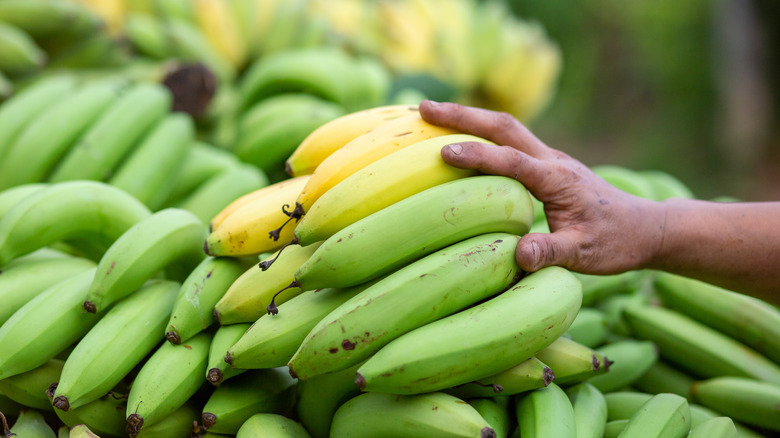The Real Name For Banana Strings And What They're Actually For
Of all the fruits we keep at home, bananas are a true staple, forming an essential part of many a smoothie, fruit bowl, banana bread, and, of course, are simply wonderful eaten out of hand as a snack. Dense, naturally aromatic, and oh-so-sweet, bananas are delicious. According to Healthline, they are also an excellent source of nutrients and antioxidants, may help regulate blood sugar, and can support healthy digestion.
Ranked among Americans' favorite fruits (via Statista), bananas are generally well-loved, whether at the green end of the spectrum of their ripeness or the speckled black. But there's one part of bananas most people seem to avoid eating: those "strings," or the long fibers that are sometimes left along the fruit's surface after peeling. These strings have a name — "phloem bundles" — as well as a purpose (other than being annoyingly difficult to peel off). If you've never considered the potential uses for phloem bundles, you're in for a nice surprise.
Phloem bundles help distribute nutrients up and down a growing banana
According to HuffPost, the unappetizing strings that peel away from a banana are called "phloem bundles." Although they can seem unpleasant, they distribute nutrients along the length of a banana as it grows. And though most people seem to dislike these strings, an old Blogspot blog called "The Dangers of Phloem Bundles" even went so far as to satirize this part of the banana. They're completely edible and might even be healthy.
"They likely contain more and varied types of fiber," Nicholas D. Gillitt, director at the Dole Nutrition Institute, told HuffPost. "In general, all parts of fruits are healthy. We eat the skins of apples, pears, etc. We could eat the skins of bananas — including the phloem bundles — if we find them palatable, but there is no evidence to suggest they are harmful."
Gillitt noted that you'd likely have to eat many phloem bundles to obtain a substantial amount of fiber from them. But at the very least, there's no reason to peel them off — if you can stand their taste and texture.

